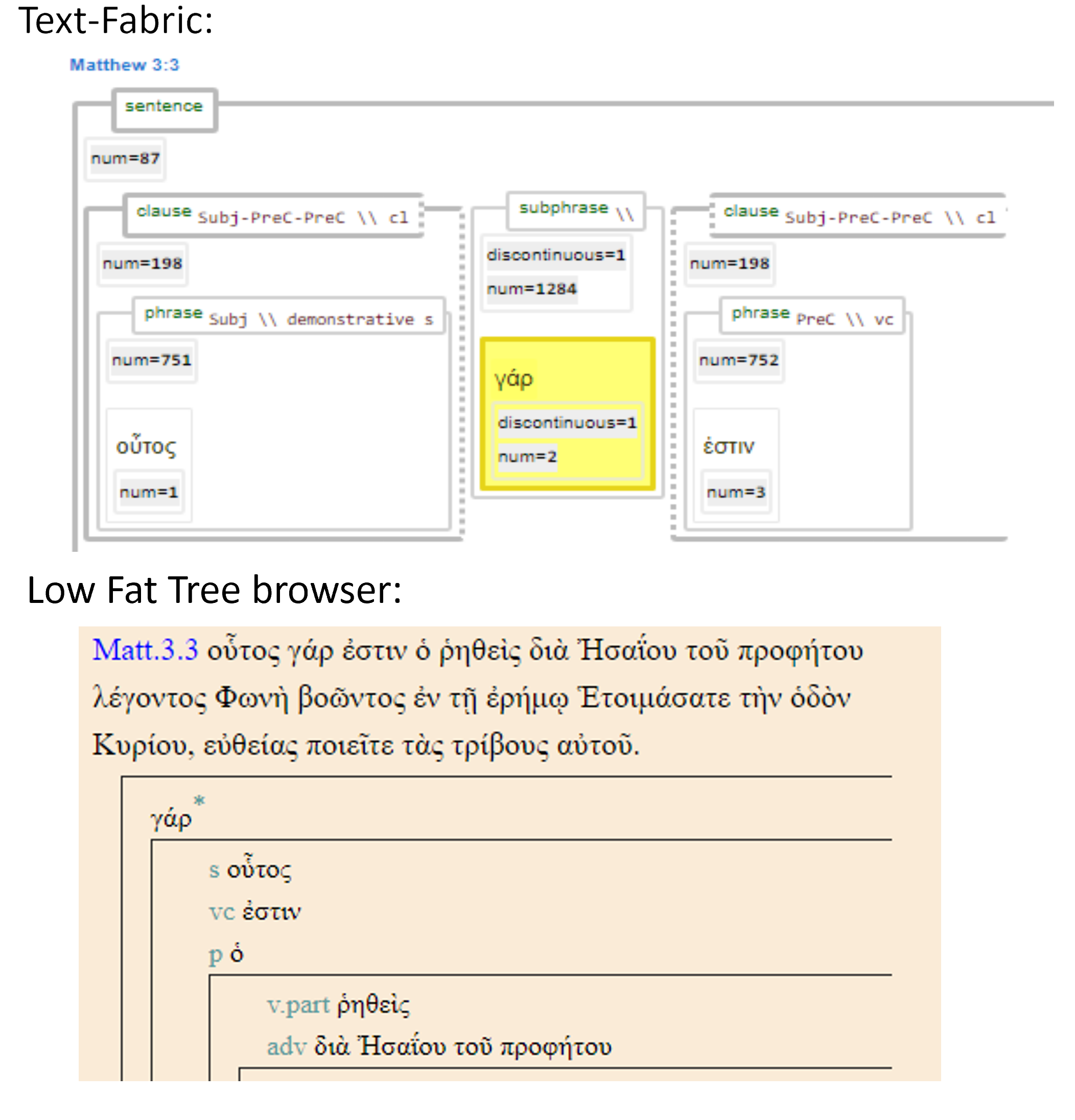N1904-TF

Text-Fabric dataset of the Greek New Testament, based on the Nestle 1904 (7th printing) edition.
About this datasetTranscription
Featureset
Optional features
Viewtypes
Textformats
Syntaxtrees
Tutorial
Latest release
Nestle 1904 GNT - Feature: discontinuous
| Feature group | Feature type | Data type | Available for node types | Used by viewtypes |
|---|---|---|---|---|
Syntactic |
Node |
Integer |
word subphrase phrase |
syntax-view wg-view |
Feature description
The discontinuous feature is set to 1 if the word is out of sequence in the XML source data in relation to the running text. This feature helps identify words that are repositioned due to the limitations of XML structure, which cannot accommodate overlapping structures.
This feature is also populated for phrase or subphrase, but only if they consist of just one word node.
Feature values
Frequency for nodetype word (used in wg-view and syntax-view):
| value | description | Frequency |
|---|---|---|
| <empty> | No discontinuation of this word node | - |
1 |
Discontinuation of this word node | 6034 |
Frequency for nodetype subphrase (used in syntax-view):
| value | description | Frequency |
|---|---|---|
| <empty> | No discontinuation of this subphrase node | - |
1 |
Discontinuation of this subphrase node | 6034 |
Frequency for nodetype phrase (used in syntax-view):
| value | description | Frequency |
|---|---|---|
| <empty> | No discontinuation of this phrase node | - |
1 |
Discontinuation of this phrase node | 645 |
Notes
This feature functions as a pseudo-boolean variable. To find all phrases without a discontinues words (i.e. phrases that do not contain postpositive conjunctions), use the following snippet:
Query = '''
phrase
discontinuous#1
'''
Results = A.search(Query)
Replace the expression ‘#1’ with ‘=1’ to find all phrased that do containing postpositive conjunctions.
In Ancient Greek, postpositive conjunctions such as δέ and γάρ commonly occupy the second position in a clause or subclause, immediately following the first significant word. This syntactic placement not only organizes the structure of sentences but also subtly influences the meaning and rhythm of the text. Given that the source data was represented using an XML file structure, which cannot accommodate overlapping structures, these conjunctions had to be repositioned in the LowFat tree representation.
The following image compares the handling of these postpositive conjunctions in Text-Fabric and the Lowfat Syntax Tree Browser. Note the asterisk behind the γάρ in the Lowfat Syntax Tree Browser, indicating this word is out of sequence in respect to the surface text.

Source description
This feature is derived from the optional XML attribute discontinuous of the tag w (word).